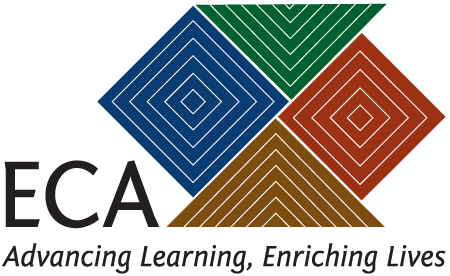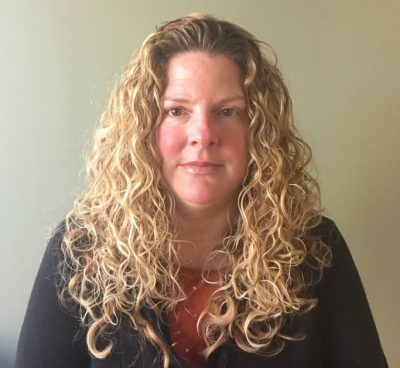Coaching for Change: “It’s time in the Sun is Coming”- Pam J.L. Roux
This month Coaching Conversations profiles Pam Roux, Workforce Development Specialist for the Department of Early Education and Care. 
Pam recalls her own experience when she was a teacher and then a director of large Jewish Community Center. Her first coach was an important influence in her development. It was a safe relationship where she could focus on the really important aspects of bringing about change in children and including families in every aspect. Later as an early childhood director of a large Jewish Community Center, coaching remained an important aspect of her career development. This was her first time as the director of a large-scale program, in a new town and in a new state with different regulations compared to the previous state where she lived. Further, the early childhood program differed from other services offered at the Jewish Community Center. Pam found professional development support from the National Jewish Community Center. She was paired with an experienced director who led a program, with a demographic population, similar to the early childhood care program she directed. Interestingly, Pam’s coach was located in her state but not her city, therefore, many coaching sessions occurred primarily over the phone. And there were a few chances to meet in-person during national Jewish Community Center meetings. As Pam reflected on this experience, she recalled how the experience with another director helped to sharpen her leadership and management skills. I learned the importance of empowering people and being accessible.
“I can tell you definitively I am a way better and was a way better director for having my peer mentor’s input and experience and calming voice and a shoulder to cry on at times.” Pam said. Equipped with several coaching experiences and an understanding of the power in building a partnership with a mentor or peer, Pam has been able to pay it forward as the workforce development specialist at Early Education and Care (EEC). Using grant monies from the Race to the Top, Pam embraced the opportunity to work with the Commissioner to design projects that would give educators the opportunity to receive coaching and support in their specific program areas. While at EEC, Pam streamlined a Peer Assistance Coaching (PAC) model that, in part, reflected her experiences and the needs of stakeholders from a cross section of program types who participated on a PAC advisory board.
“We actually selected a panel of folks who had different types of expertise of coaching — to really help us think about putting together a peer coaching that would be inclusive of all our different program types in Massachusetts that we serve in our mixed-delivery system. We were really clear that we wanted folks from all of our program types — Center based, Family Child Care and Out of School Time.”
Coupled with honoring different program types, Pam and her team decided that the coaching model should be implemented statewide to benefit educators across Massachusetts.
“Instead of a pilot in one or two large communities, we sought out programs across the whole state to participate in the pilot,” Pam said.
Of course, starting a new project comes with challenges. Pam’s commitment to supporting mixed-delivery systems meant that there would be unique challenges to every program type. One such challenge included finding ways to pair coaches within the same program type who were not in the same geographic location.
“The last thing we wanted to do is disrupt time with the children,” she said.
To overcome this challenge, Pam introduced a video based instructional platform technology which allows coaches to provide both qualitative and quantitative feedback after viewing their mentee’s classroom interactions. She also recognized that culturally appropriate training is necessary to adequately support educators in diverse communities. As the program continues across Massachusetts, building internal capacity has become another area requiring attention. Pam hopes to soon see internal support systems created to sustain coaching within programs. She believes that when administrators focus on sustainable development, they would in turn build staff capacity to maintain coaching in years to come.
Pam’s commitment to evaluating the PAC coaching model included ongoing monitoring as well as use of a formal observation tool to measure classroom quality. This continuous improvement model allowed her to make ongoing adjustments to constantly improve the model. There were many lessons learned. For example, coaches need training, ongoing support, and opportunities to talk to other coaches. Mentees need to understand what coaching is and how to effectively use a coach; coaching conversations need to use data as a basis for change and improvements. Coaches need to shift coaching from relationship building to improving instructional practice so as to be able to make the substantive changes that impact child outcomes. What happened to the coaches that were implementing PAC? Many have continued in this role in their respective communities; others have become full time coaches, two have transitioned to working in licensing at EEC, and many have taken on leadership roles in their communities or respective regions.
Key Insights on the Peer Assisted Coaching Model
The purpose of the Peer Assisted Coaching Model (PAC) is to support educators in developing high quality early education and out of school time programs which meet expectations of state standards as defined by QRIS, Workforce Competencies, and Early Learning Standards and positively impact child outcomes. The model uses a peer to peer coaching approach that supports educator’s growth and change.
The PAC model involves collaboration among Consultant Teachers (CTs) or Consultant Administrators (CAs), Mentees and, where appropriate, Mentees’ Instructional Leaders. Participants represent a variety of early childhood settings including center-based, FCC, preschool, Head Start, and OST programs. The Model provided 40 hours of training for CTs and CAs, a web-based coaching platform, CLASS assessments and support and monthly professional learning communities.
For more information on the PAC model, visit, http://www.mass.gov/edu/birth-grade-12/early-education-and-care/peer-assistance-and-coaching/
A key question going forward: How do you help leaders set up a program for success and at the same time build staff capacity to support each other?
Reply Below to share your insights and suggestions
About the Author
Esprene Liddell-Quintyn is a Research Associate at Early Childhood Associates, Inc.

